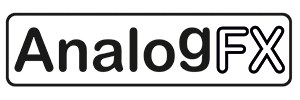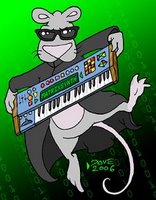Saturday, June 09, 2007
MemPot_xoxbox2
YouTube via misusage. Sent my way via David. Seen on OikoSulku.
"Memory Pot controlling xoxbox filter cutoff. (see misusage org or oikosulku blogspot for details)" You can find the specific MemPot post with schematics and more here.
Hygrogyrum - Ultra Synth Solo
YouTube via hamsterdunce, aka Dave of umop.
"Original track off my Parallax CD "umop apisdn." Features Access Virus kb synth and Korg 01/W for backing tracks. Visit umop.com/parallax.htm and purchase a CD if you like jolly good uber-synth-wank."
Alesis A6 Andromeda
 via this auction.
via this auction.
Details:
Polyphony: _ 16-voice, 16-channel multitimbral
Synthesis Method: _ Real analog subtractive
Oscillators: _ 2 oscillators (with subs) per voice, 5 waveforms available (sine, triangle, square, up saw, down saw)
Filters: _ 32 total - 2-pole multimode resonating filter per voice, 4-pole lowpass resonating filter per voice
Program Memory: _ 256 preset and 128 user-defined
Mix Memory: _ 128 user-defined
Audio Outputs: _16 mono outputs, one for each of 16 voices (eight 1/4" TRS jacks) _Stereo main outputs (two 1/4" jacks) _2 mono aux outputs (two 1/4" jacks) _Stereo headphone output (1/4" TRS jack)
Audio Inputs: _ Two 1/4" jacks
External Audio Filter Inputs: _Three 1/4" jacks - one each for Voices 1-16, Voice 15, and Voice 16
Pedal Jacks: _ Pedal/CV, Switch and Sustain - each with dedicated 1/4" jack
MIDI Connections: _ MIDI In, Out, Thru
Memory Card Slot: _PCMCIA-format
Power: _ 100-230 VAC, 50/60 Hz 30W
Dimensions (WxHxD): _ 40.1" x 4.8" x 16.1" (1019mm x 122mm x 409mm)
Weight: _ 47lbs. (21 kg)
MOOG Multimoog
 Title link takes you to shots via this auction.
Title link takes you to shots via this auction.Details:
"This is one of the most rare Moog synths-less than 1,000 were ever manufactured. (They were made in the late 1970's, maybe until 1980 or 81 at the latest.) It's an awesome sounding synth , with that unmistakabley rich warm analog sound you get from Moog oscillators and filters. This synth has 2 oscillators, and tons of routing possibilities for the modulation and ribbon controller. The ribbon is a very cool feature, as are the touch sensitive keys which allow you to vary the amount of modulation you bring in depending on how hard you depress the key. This model was loaded with a surprising amount of features for a synth this size, and some of them, such as the keyboard touch feature or the ability to morph from one waveform into another, are definitely unique to the Multimoog."
Inside an Oberheim OB-SX

Click here for more shots via this auction.
The OB-SX is a preset analog polysynth with limited programmability. I always wondered if it was closer to the OB-X or OB-Xa. According to the owner's manual notes below it has the same circuitry as the OB-X.
Update via the comments: "The OB-SX manual says its the same as the "Xa" not "X"! Looking at it right now..." Note: check out the update towards the end of this post as well.
"From the Owner's Manual:
'The Oberhiem OB-SX brings polyphonic synthesis to the discerning keyboardist at an affordable price. It's as simple to use as the popular "string machines" with the versatility of sounds achievable only with a variable synthesizer. The OB-SX is a real synthesizer utilizing the same circuitry as the celebrated OB-X. User programmability is unnecessary since the 'SX' is programmable with 24 sounds including those sounds most used and requested, such as: strings, brass, clavinet, organ, electric piano, bass, flute, and synthesizer solo. Other great sounds, many unique to the 'X' family, are also included. Each program can be modified to ones' own personal taste by adjusting the front panel controls (since they are constantly in edit mode). The programs (sounds) are permanently stored on a plug-in computer memory chip. Should 24 programs not be enough, an additional 24 are available for a nominal charge*. A switch on the back panel is provided to switch from each group. Custom chips can be used by sending an OB-X cassette tape to Oberheim (first 24 programs can be used). The key ingredient to the OB-SX is: although it's as simple to operate as your typical string machine, you can update your sounds by changing program chips.'"
Update:
"Strangely enough, the original sales flyer for the OB-SX (printed around the summer of 1980 I presume) claims it utilizes the same circuitry as the OB-X.
Read for yourselves here (the white text on black background): link
Maybe the SX was originally meant to utilize the same circuitry as the OB-X but that in the end Oberheim chose to base it on Curtis chips seeing as the OB-Xa was soon to replace the OB-X at the start of 1981.
The first OB-SX's (mk I) started to ship in the late summer/fall of 1980 so it did predate the OB-Xa. I'm not sure when the first mk II's shipped though...possibly in the spring/summer of 1981!?
Btw, does anyone here have the 2nd (or 3rd) edition of the service manual for the OB-SX (mk II)? It should be mentioned in there when the mk II first appeared.
Micke"
Update via PeteM in the comments:
"I'm a little late here, but also have a 56 Preset, Blue striped, genuine 5 Voice OB-SX, despite all references stating that the OB-SX only came in 4 or 6 voice configurations.
IMHO it is probably best to think of the OB-SX as a hybrid between the OB-X and OB-Xa, as it shares features with both. I did wonder if the OB-SX was a proof of concept for changing the production techniques from the discreet circuitry of the OB-X, to the more reliable Curtis Chip based voice card circuitry of the OB-Xa. Personally, I consider the OB-Xa as an advanced continuation of the OB-X model, rather than its replacement.
My Owner's Manual First Edition August 1980 states:
"The 0B-SX has been developed using much of the same circuitry as the Oberheim OB-X in order to get true polyphonic synthesizer sounds. This gives you the sound of an 0B-X along with the ease of operation of a pre-set synthesizer."
Owners with later User Manuals can also verify that their manuals refer to the "OB-Xa" instead of the "OB-X", so both camps are correct. This would suggest that the OB-Xa was the next evolutionary step of OB-X project.
As others have already stated, the OB-SX has the Voice Architecture of the OB-X, but using a manufacturing process relying on Curtis chip based voice cards like the OB-Xa. Some of the sounds in the first 24 presets bear testimony to the Cross Mod of the OB-X, yet it generally sounds more like an OB-Xa in 12dB/Oct mode. The sonic similarities between the OB-SX and OB-Xa are largely due to the CEM3340 Oscillators, CEM3320 Filter and CEM3310 Envelope Generators that were common to both machines.
The main differences in voice architecture between the OB-SX and OB-Xa are that the OB-SX uses Oscillator Cross Modulation like the OB-X, whereas the OB-Xa uses Filter Envelope to modulate the Oscillators instead. The OB-SX voice card only has a single CEM3320 Filter chip in 12dB/Oct mode, whereas the OB-Xa has both a 12dB/Oct and 24dB/Oct filter chip on each voice card.
Kenton can partially MIDI retrofit an OB-SX to recieve only Note On/Off data using an OB-X MIDI kit rather than an OB-Xa kit, which probably creates further debate about which OB family member the OB-SX takes after."
Synthesizers.com Modular
 via this auction.
via this auction.Details:
"Portable System-22
1) QCP22 Vinyl-covered 22 space cabinet.
1) QPS1 Power Supply
1) QDH20 DC Power Harness
1) Q104 MIDI Interface
1) Q105 Slew Limiter
3) Q106 Oscillator
1) Q107 State Variable Filter
2) Q108 Amplifier
2) Q109 Envelope Generator
1) Q110 Noise Source
1) Q112 4-Channel Mixer
1) Q116 Ring Modulator
1) Q117 Sample & Hold
1) Q124 Multiples
1) Q125 Signal Processor
1) Q137 Power Control/Interface
1) Q138 Logo Panel"
MOOG Taurus/Rogue Patch Cards
 via this auction.
via this auction.Details:
"4 original Moog patch guides. 1. Original Taurus Voice 2. Bass I 3. Solo VI 4. Bass VII"
Friday, June 08, 2007
Synthorama Synthesizer Museum Switzerland
YouTube via Moogulator.
"This is a short walk through Martin Hollinger's Synthesizer Museum Synthorama in Luterbach, come and visit it, it's worth it!! yours Moogulator - www.sequencer.de Synth Site. I left out audio, it was only interesting for the ARP stuff in the beginning, will upload audio version to my Synth Wiki Sektion later."
via sequencer.de
Gentle Electric

Remember the Gentle Electric 101 Pitch Follower? Carl Fravel dropped by in the comments and left a link to the Gentle Electric website.
"While working at Aries Music in the Fall of 1976, Carl Fravel had some conversations with Dennis Colin, the designer of the Arp2600 and of the Aries, about pitch following for analog synthesizer control. Dennis had prototyped a pitch follower using cascading octave lowpass filters, but didn't create a product from it. After leaving Aries, Carl founded Gentle Electric, for which he designed a pitch follower a using a different approach (a time-domain pattern recognition algorithm), and included envelope following and envelope triggering features. Gentle Electric's early business included custom synthesizer work and prototype quantity circuit board manufacturing, until the pitch follower was ready for manufacturing. Approximately 200 of these pitch followers were sold over the next 10 years. The pitch follower existed in 5 configurations..."
WintherStormer
 Remember WintherStormer and their custom Minimoog with temperature sensitive liquid crystal paint? This is their DIY WintherStormer Modular. Title link takes you to the WintherStormer site where you will find more . They will be releasing their first studio CD which will be released in about a week or two.
Remember WintherStormer and their custom Minimoog with temperature sensitive liquid crystal paint? This is their DIY WintherStormer Modular. Title link takes you to the WintherStormer site where you will find more . They will be releasing their first studio CD which will be released in about a week or two.
the howard goodall ensemble plays...
YouTube via sarrusophone.
"j.s. bach's brandenburg concerto no.5, from goodall's "how music works" series. production joy!" MOOG Voyager.
MAWZER to Launch
 Remember MAWZER?
Remember MAWZER?"On June, 12th we invite you to the first date of our 2007 workshop series in the Sternradio: The french manufacturer themselves come over to Berlin to show you possibilities of use and configurations for this amazing midicontroller.
We kindly ask you to confirm you participation shortly, introduction will be once at
 5 pm, once at 8 pm.
5 pm, once at 8 pm.This Event is for free, fingerfood, refreshers and other drinks are available at the long bar of Sternradio, you are very welcome."
Title link takes you to more info. via sequencer.de.
Thursday, June 07, 2007
LAMM Memorymoog Signed by Bob Moog
 Title link takes you to shots via this auction.
Title link takes you to shots via this auction.You can find more info on the LAMM upgrade here.
via diablo guapo
Custom Jade MOOG Voyager
 Custom Jade MOOG Voyager with Argentine Lignum Vitae wood case via Synthwood. Title link takes you to a couple more shots.
Custom Jade MOOG Voyager with Argentine Lignum Vitae wood case via Synthwood. Title link takes you to a couple more shots.
New Buchla 200e Noodles via Chris
 17YearGuest, and Use_Of_Uncertainty. Title link takes you to them. Also:
17YearGuest, and Use_Of_Uncertainty. Title link takes you to them. Also:"The Garden of Memory gig I'm playing in a duo with Henry Kaiser is two weeks from tonight. There's always enough fun things going on at this walk through event to keep even the most jaded new-music aficionado amused."
Serge Modular Track via Retrosynth
 Title link takes you to a pretty amazing 9:54 track of the Serge Modular via Cary Roberts of Retrosynth, via AH. You can see more shots of the modular here.
Title link takes you to a pretty amazing 9:54 track of the Serge Modular via Cary Roberts of Retrosynth, via AH. You can see more shots of the modular here.
Sound Advice DVD on Synthesis
 "Sound Advice is a 3-disc set.
"Sound Advice is a 3-disc set.* Disc 1 explores the many ways you can edit or tweak voices and also teaches you how to create a series of ‘simple' voices from scratch. This disc offers a unique insight into the life of a professional sound designer, not only providing hard technical advice but also revealing some of the fascinating philosophies and approaches used by the pros.
* Disc 2 provides an extensive parameter-by-parameter trawl through a classic analog-style sound engine. From the waveforms and pitch parameters, to multi-mode filters, EGs, LFOs - Nothing is overlooked. The DVD menu is particularly helpful here since you can view by Section, or simply dive straight into a parameter you need to learn about using a separate glossary-style system.
* Disc 3 doesn't just lift the lid on FX, it displays all of the ingredients and provides you with endless recipes for creating, plus tips on applying, digital effects."
"'All you need to know about oscillators, filters, envelopes, dynamics and effects that will enable you to produce the sound that you are looking for on your synth - totally from scratch,' says legendary producer and 2007 GRAMMY nominee Alan Parsons."
Title link takes you to more info including a video.
The VCO Chip Cookbook

via electro-music.com:
"Ms Electronics is very proud to publish and distribute the new 118 page book by Thomas Henry entitled :
The VCO Chip Cookbook
It's impossible to do serious analog synthesis with chips like the 566, 8038 and XR-2206, right? Wrong! They've got loads of life left in them, but only if you let an outsider like Thomas Henry steer you in the right direction.
Forget the pessimistic data sheets from the manufacturers; in this amazing guide you'll learn the secrets only a handful of designers are aware of. Drawing extensively from his personal lab notebooks, the author sets the record straight, presenting accurate design details in a friendly yet complete form.
To round out the deal, there are over one-hundred figures, tables, helpful hints, schematics, design equations and simulation graphs, making this the single most important resource for electronic music designers wishing to exploit integrated VCO chips. The only mathematics required is a smattering of simple high school algebra. Best of all, every circuit and technique described has been thoroughly tested at the workbench; you can design neat circuits with confidence now.
Learn how to put the 566, 8038 and XR-2206 chips under linear or exponential control, get square, sub-octave, triangle, sine, ramp and pulse-width modulated outputs, add in hard sync, balanced modulation, temperature compensation, interface to CMOS, and even obtain a wild rampoid output with no commercial equivalent!
As icing on the cake you'll find resource information, a complete bibliography and three appendices showing you how to build your own VCO test equipment.
ABOUT THE AUTHOR
Thomas Henry is the author of over 130 articles and eight books on the subjects of mathematics, electronic music, microcomputers, astronomy, magic and caves. Most days of the year, you'll find him as an extremely busy mathematics instructor at South Central College in Minnesota. His leisure time activities include bird watching, exploring grasslands, amateur astronomy, magic, road trips to National Parks and flower gardening. The bat is his favorite mammal.
The attached PDF file contains the books table of contents so please give it a look.
The front and back are made of heavy "red" card stock and has a red spiral binding so that the book may open flat on your workbench.
The price is $22.00 plus $4.60 shipping in the US and Canada and $7.50 all other destinations.
Please PM me if more than one book is requested.
Payment is accepted via Paypal at the following account:
billnrob@optonline.net
PUBLISHED EXCLUSIVELY BY
sMs ELECTRONICS"
Edgar Winter Group - Frankenstein - Urban Legend Solved
YouTube via joneps. Sent my way via Ben.
Urban Legend bit: What's funny about this is way back I heard about how the Edgar Winter Group played an ARP 2600 as a strap on keytar when playing the track Frankenstein live. I thought the notion was pretty insane considering the size and probable weight of the 2600. So when Ben sent this my way, I was obviously pretty excited. I would finally get to see it. Check it out!
The CASIO VL-1 "VL-Tone" pocket calculator mini synth
YouTube via retrosound72.
"The Vl-1 plays the preset sounds (fantasy, violin, piano, flute, guitar) and the preset rhythm tones (rock 1, rock2, bossanova, samba, rhumba, beguine, swing, 4-beat, waltz, march). Used by Trio (Da, Da, Da) , Human League (Dare album). recorded with a simple web-cam. more info: www.retrosound.de"
The Moog Taurus Mk1 bass pedals (part4)
YouTube via retrosound72.
""The fattest bass ever..."
used by Rush, Genesis, Asia, The Police, J.-M. Jarre, Marillion, U2, Saga, Steve Hackett, Yes, Led Zeppelin and many more more pics and info: www.retrosound.de
The vibrations from the Taurus in the room let the flap fall down ever ;-) recorded with a simple web-cam."
Sequential Circuits Prophet 5
 Title link takes you to shots via this auction. Note the switches on the top right.
Title link takes you to shots via this auction. Note the switches on the top right.Details:
"Sequential Circuits Prophet 5, serial 0074 (Rev 1). There were only 182 Rev 1's made, many of which were returned to Sequential when the Rev 2 came out. Nowadays, there are probably less than a couple dozen working Rev 1 Prophet 5 keyboards in the world.
It's a fantastic sounding synthesizer - I've compared it directly with the Rev 3 (the majority of the Prophet 5's) and it's distinctly warmer and the resonance is more musical. It instantly recalls the classic soundtracks that the Rev 1 and Rev 2 keyboards were responsible for during the late 70's. It's a classy looking synthesizer as well. While there are a few scratches and marks, it's in remarkable condition considering it's 30 years old.
I had it serviced in August 2006: the battery was replaced, it was recapped, and had general maintenance performed. It's been solid ever since - I've kept it in a clean studio environment and have not gigged it. All 5 voices work, all knobs and buttons function, and all keys are responsive and extremely playable.
A previous owner modded it with 5 switches. These switches, along with the sequencer interface jacks, were disconnected at the recommendation of the service technician (they were interfering with the stability). The previous owner also added a cassette interface from a Rev 2, and it's working properly."
If anyone knows what the switches did, please comment.
Update on the mods:
"the CV/gate only control's voice 5. With this mod you can have each voice control (by the same CV/gate) .. so instead of getting a 2 OSC mono sound, you could get a 4 oscillator mono sound."
Wednesday, June 06, 2007
Boadicea Enya
YouTube via farnellraptor. Sent my way via Stephen. Roland Juno-60
MOOG Prodigy
 Shot of the inside of a MOOG Prodigy sent my way via Jason.
Shot of the inside of a MOOG Prodigy sent my way via Jason.Support The Synths:
BTW, Jason is participating in Lifehacker.com's Coolest Workspace Contest. Jason is the "Wall of Sound" entry, the only one with synths pictured I might add. Go support the synths!
Museum Technicians - The Underground Series 11/14
YouTube via museumoftechno.
"Well, you can jolly well smack my bitch up, because we've reached episode 11 at long last, wherein we, Mssrs Cornwell and Braidy, bring the elements of our track together into a storming mix which will act as a proper narnie magnet and generally win us ultimate producer propz."
Depech Mode's Puppets by Micah
"In my attempt to get somewhat closer to the arp 2600 sound, I layered the Juno and the Jupiter together for this version of Depeche Mode's Puppets. The juno in my opinion sounds way closer to an american synth then the the Jupiter, but put together you have a synth of a different sort. The drums were done using the juno for the bass drum, and and old korg drum machine sample for the snare. I love that low big sound. This sounds nothing like the orignial puppets but I was just messing around."
Pretty cool. Title link takes you to more by Micah.
Formanta EMS-01

Click here for shots via this auction.
Details:
FORMANTA EMS-01 is an electric music instrument combining a polyphonic organ and a monophonic synthesizer. It is designed to perform music of all genres and to create various sound effects while recording soundtracks for movies and plays, or studio recording. The organ has a 5-octave keyboard, 6 preset sound timbres, frequency vibrato with adjustable vibrato delay, decay adjustment and a stereophaser (common for organ and synthesizer). The "vibrato delay" scheme is activated again only after all the previously pressed keys are released. In the "legato" mode the "vibrato delay" scheme is not activated.
The synthesizer has:
3-octave keyboard;
modulator, modulation voltage from which is applied to frequency modulator, width modulator, filter, and amplifier;
broad band oscillators 1 and 2 (with various waveforms);
mixer, designed for summation of signals from oscillators 1 and 2, noise generator, external source, and ring modulator;
filter, designed for dynamic and static changing of the spectrum of summarized signal from mixer output;
amplifier, designed for making the sound corresponding to various parameters of the envelope;
Visual division of the synthesizer panel into the above listed sections and their lay-out make it more easy to orientate oneself while setting the required timbre. Besides, the synthesizer is able to simultaneously control one more similar synthesizer through a special cable and connectors CONTR IN and CONTR OUT.
The instrument provides the opportunity of connecting stereo headphones; the volume in headphones doesn't change in case of changing the volume of the instrument from zero to maximum at all the outputs of the instrument with the foot pedal; thanks to this, preliminary control of timbre through the headphones before applying it to amplifiers is possible. By switching on PHASER into the channel of organ or synthesizer, it is possible to get stereo sound in the outputs STEREO L and STEREO P. In case PHASER is switched off, both channels will function in MONO mode.
Specifications:
Supply voltage AC 220+10V, 50 Hz;
Power consumption within 75 VA;
Operating conditions: temperature 15-35 C, humidity 65%, barometric pressure 86,6 - 106,6 kPa;
Relative frequency deviation after 4 hours of uninterrupted operation within 0,5%;
5-octave organ keyboard;
Organ band from 43,65 Hz (F controctave) to 1318 Hz (E in three-line octave);
3-octave synthesizer keyboard;
Sound range - 9 octaves;
Adjustment range for organ and synthesizer + 6% (+ 0,5 tone);
Minimal range of continuous detuning of oscillator 2 regarding oscillator 1 - 1 octave;
Range of adjustment of filter cutoff frequency 100- 1500 Hz;
Minimal dynamic range - 55 dB;
Weight within 30 kg.
Sound1
Sound2
Sound3"
Samples mirrored here.
My 263 prototypes
 flickr by verbos2002.
flickr by verbos2002."This is my new creation. The 263 quantizer / shift register. It is a dual 4 stage analog shift register and an 8 channel chromatic quantizer for Buchla systems. The switch in the middle chains to 2 shift registers together for one 8 stage one. These will be available for sale soon, when I get all the bugs out."
Top 10 Synths added to Sticky Posts
Just a heads up. I added the Top 10 Synths Of All Time post to the right, Sticky Posts section.
Doepfer MSY2 MIDI Sync
 via this auction.
via this auction.Details:
"MSY2 is an interface that converts the MIDI realtime events Clock, Start and Stop into the corresponding signals Clock and Start/Stop of the SYNC standard. This standard was used e.g. in the Roland devices TB303 bass line or TR808 rhythm composer.
MSY2 is equipped with 2 SYNC DIN sockets (switched in parallel), a Clock miniature jack socket (3.5mm), MIDI-in and MIDI-Thru. SYNC-CLOCK is a periodic signal (0/+5V) representing the tempo. SYNC-START/STOP is a signal that indicates one of the 2 possible states: START = +5V, STOP = 0V. The Clock pin of the SYNC standard is additionally available from a miniature jack socket e.g. for synchronizing the arpeggio input of an analog synthesizer with MIDI.
 MSY2 enables the 1:1 conversion of MIDI CLOCK to SYNC CLOCK (i.e. 1 MIDI clock triggers 1 SYNC clock pulse), as well as the reduction of the tempo by dividing the incoming MIDI clock frequency by an integer factor. The factor can be set to any value between 1 and 16 with a DIP switch at the bottom of the MSY2. A factor 1 corresponds to the 1:1 conversion, 16 is the maximum of frequency reduction, i.e. after 16 MIDI clocks 1 SYNC clock appears.
MSY2 enables the 1:1 conversion of MIDI CLOCK to SYNC CLOCK (i.e. 1 MIDI clock triggers 1 SYNC clock pulse), as well as the reduction of the tempo by dividing the incoming MIDI clock frequency by an integer factor. The factor can be set to any value between 1 and 16 with a DIP switch at the bottom of the MSY2. A factor 1 corresponds to the 1:1 conversion, 16 is the maximum of frequency reduction, i.e. after 16 MIDI clocks 1 SYNC clock appears.With two other switches the Start/Stop polarity and the Clock polarity can be changed for special applications not following the SYNC standard.
Clock and Start/Stop are displayed with 2 LEDs.
MIDI-In, MIDI-Thru"
Roland MSQ-100
 via this auction.
via this auction.Details:
"Many current MSQ-100 users use it as a MIDI-to-sync converter for the popular Roland TB-303, TR-909 and TR-808. I used mine to sync two Frostwave Fat Controller analog sequencers as seen in the embedded video. Then, if I wanted to sync to my DAW, I flipped a single switch on the MSQ-100 and now they're locked to external MIDI clock. "

Roland MC-8

Update via Chris Carter in the comments:
"I owned an MC8 from 1982 to 2002 and used it on many recording (I bought it from Landscape, who recorded 'Einstein agogo' with it). An article I wrote about the MC8 can be found here."
Click here for shots via this auction.
Details:
"This is the Roland MC-8 MicroComposer. They called it a MicroComposer due to its diminutive foot print. Actually, that isn't true. It was designated as the MicroComposer as it was the first microprocessor controlled sequencer - the Intel 8080, to be precise. In addition to launching the 'MC' moniker, it also introduced other innovative features like copy and paste.
So, if you were an electronic musician in 1977, you could drop $8000 and string together 1000 or so notes with Japanese precision.
 The MC8 provides eight channels of CV and gate outputs for controlling inputs found on synthesizers from Moog, Roland, Arp and others. I used this with a Doepfer A-100 modular, Prophet 5, minimoog and SH-101. There is no MIDI, this is all about a microprocessor coupled as directly as possible to analog voltage outputs.
The MC8 provides eight channels of CV and gate outputs for controlling inputs found on synthesizers from Moog, Roland, Arp and others. I used this with a Doepfer A-100 modular, Prophet 5, minimoog and SH-101. There is no MIDI, this is all about a microprocessor coupled as directly as possible to analog voltage outputs.If you're sequencing drums, you don't have to waste the normal CV outputs (and consume memory with unnecessary note data) by using the additional MPX outputs. You can even automate tempo and the presence of portamento. Or, you could use the MPX outputs in conjunction with a sequential switch to control which of several envelopes are used for a particular phrase. They were clearly thinking of serious, complete automation here.
Controlling it all is an impressive console that looks as if it were responsible for launching ICBMs. It certainly feels that way as all the controls and switches seem designed to withstand a nuclear blast. It worked, too. 30 years later, this machine still works great. If you're at all familiar with a 10-key keypad, you can enter data in by touch, without even looking at the unit. The response of the keypad is delightfully retro and a joy to use. All the buttons have satisfying physical feedback that seems absent on current gear.
The MC-8 was expensive for Roland to build, though. It is reported only 200 left the factory. This is a rare chance to own a unique piece of Roland history. I'm selling this and other items because my work area needs to occupy a smaller space.
Famous users of the MC-8 are reported to include: Kraftwerk, Human League (Dare), Tangerine Dream, Hans Zimmer, Toto, and Tomita.
Included in the auction is the original factory manual, interface cable, CV interface unit and, of course, the MC-8 itself."

Sequential Circuits Pro One
YouTube via stretta.
"Running through the various functions of the Pro One. Not a keyboard wankery video, or musical statement. Created for an ebay auction."
Doepfer MAQ 16/3
YouTube via stretta.
"A short test of the Doepfer MAQ 16/3. Not a musical statement. Created for an ebay auction.
PREVIOUS PAGE
NEXT PAGE
HOME
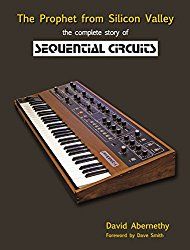
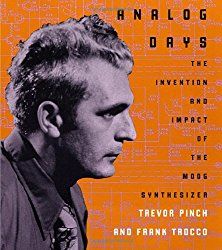
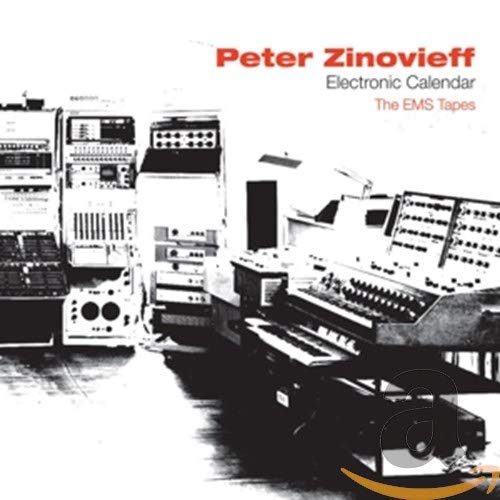
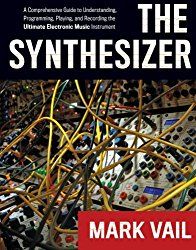
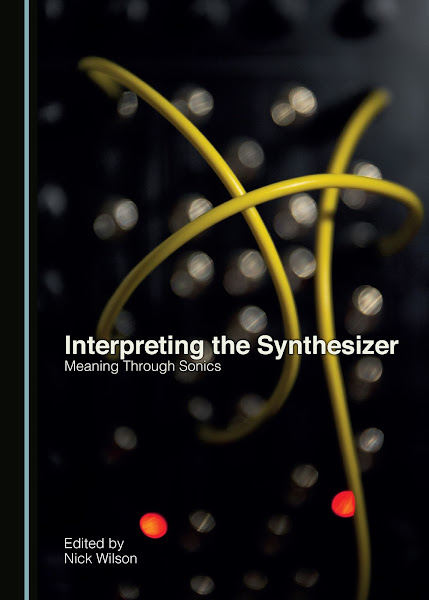
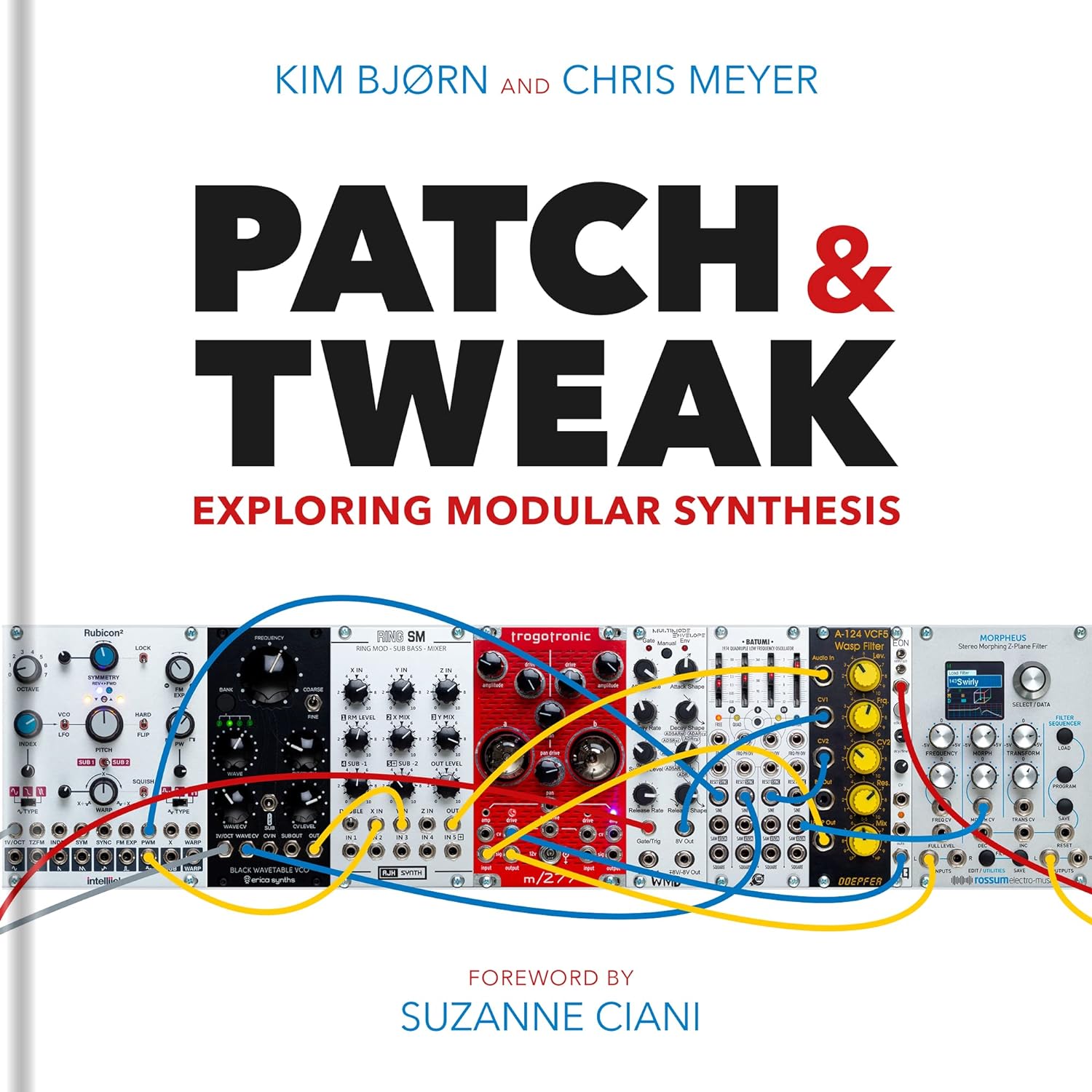

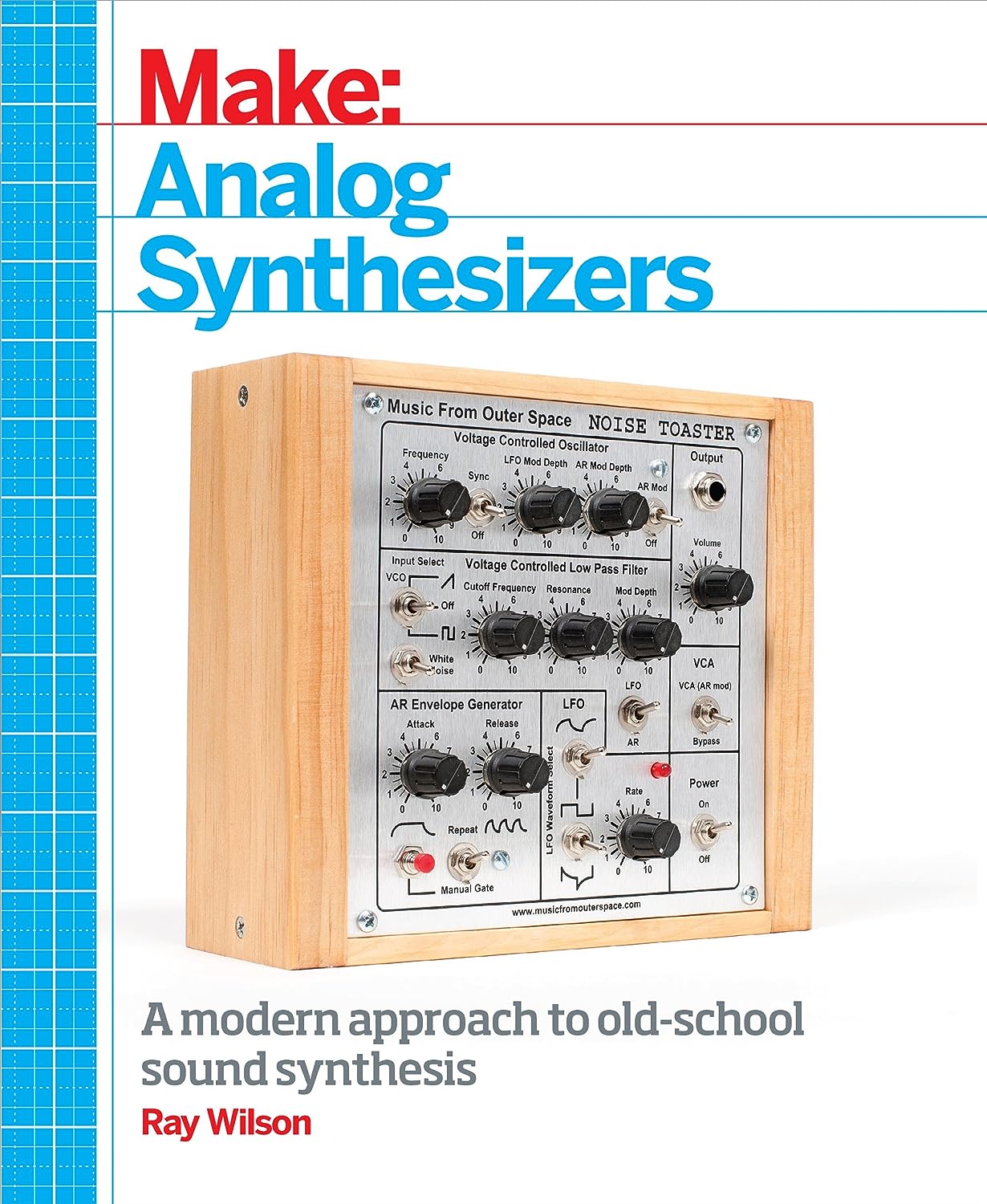
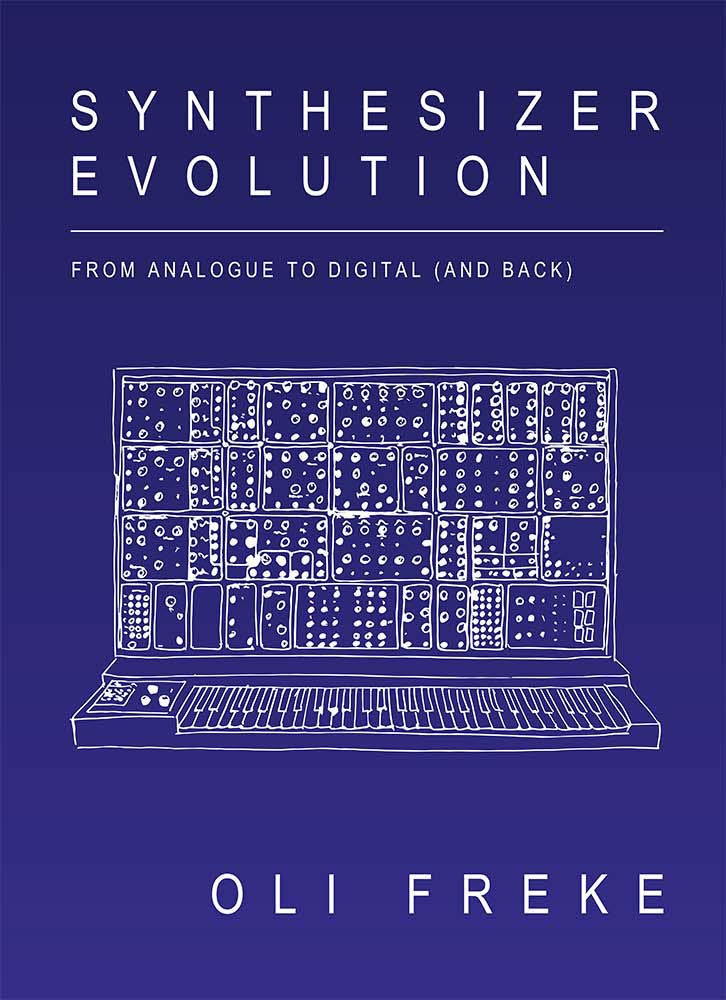
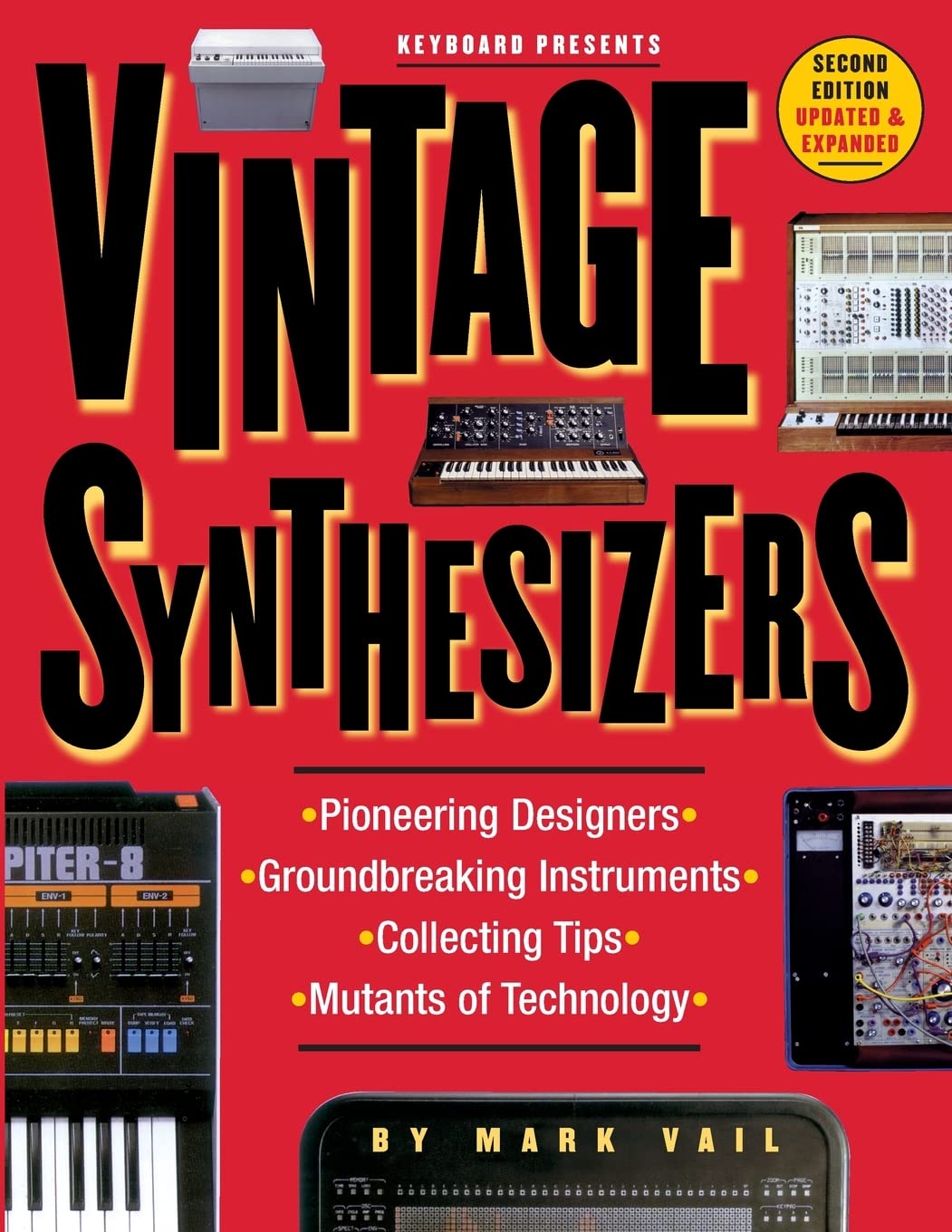
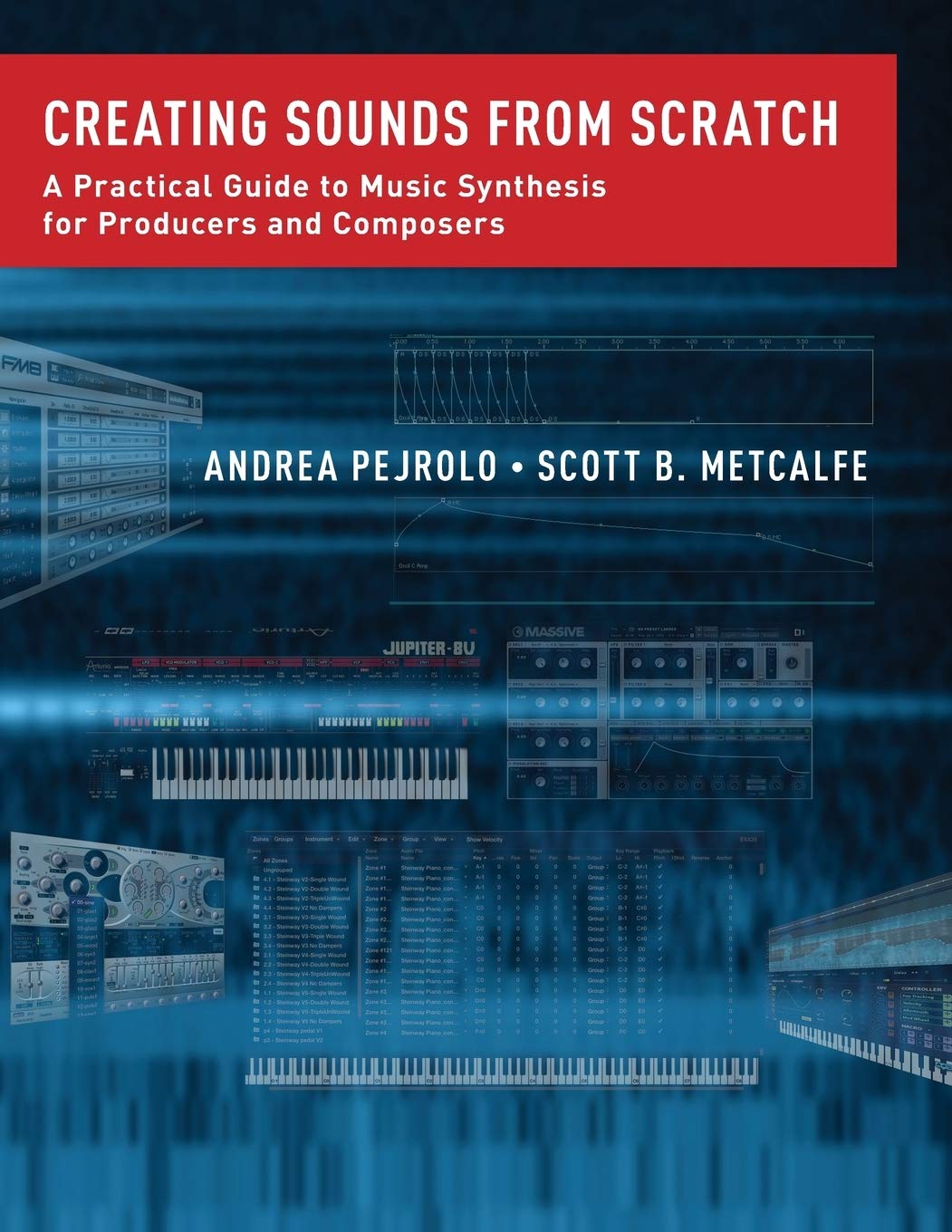
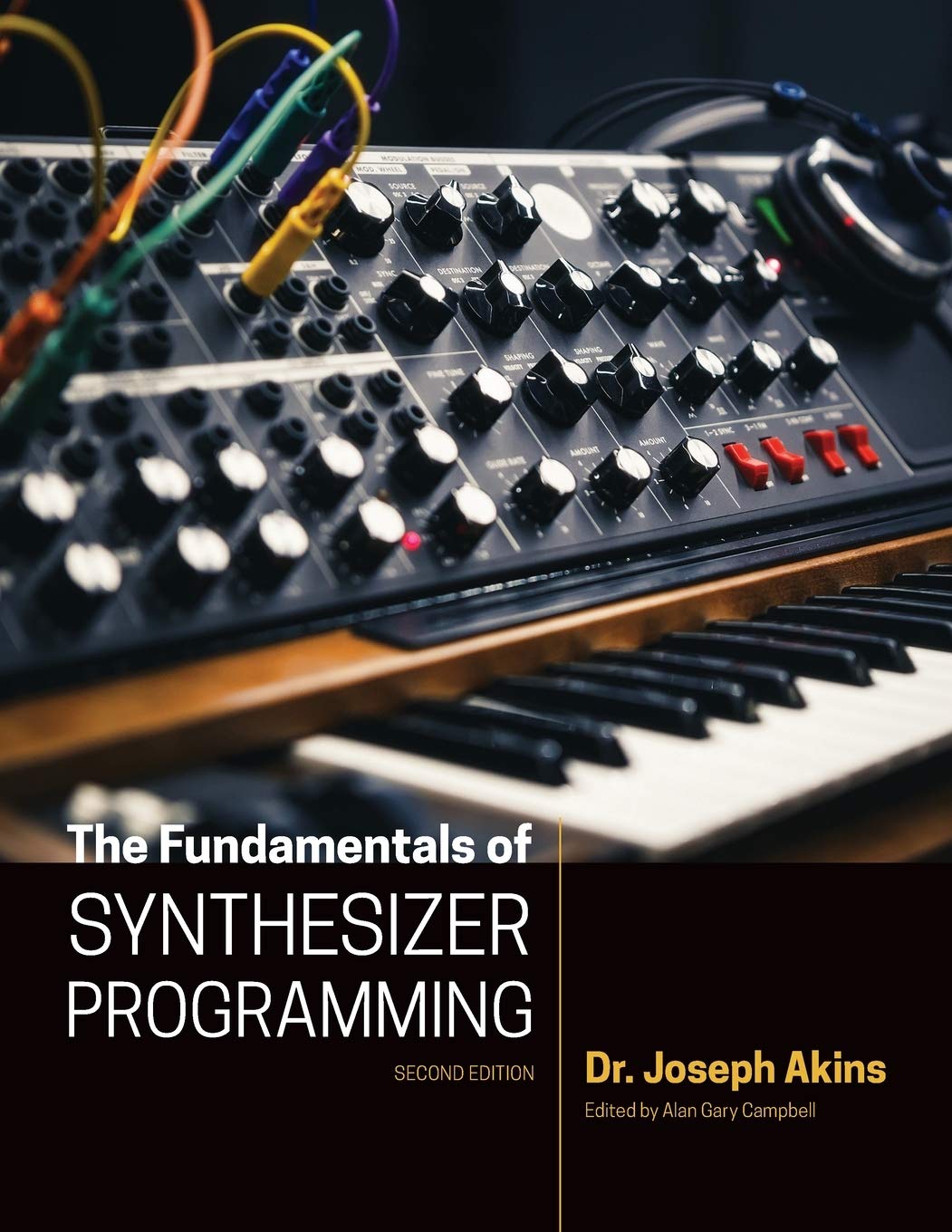

© Matrixsynth - All posts are presented here for informative, historical and educative purposes as applicable within fair use.
MATRIXSYNTH is supported by affiliate links that use cookies to track clickthroughs and sales. See the privacy policy for details.
MATRIXSYNTH - EVERYTHING SYNTH













© Matrixsynth - All posts are presented here for informative, historical and educative purposes as applicable within fair use.
MATRIXSYNTH is supported by affiliate links that use cookies to track clickthroughs and sales. See the privacy policy for details.
MATRIXSYNTH - EVERYTHING SYNTH


























